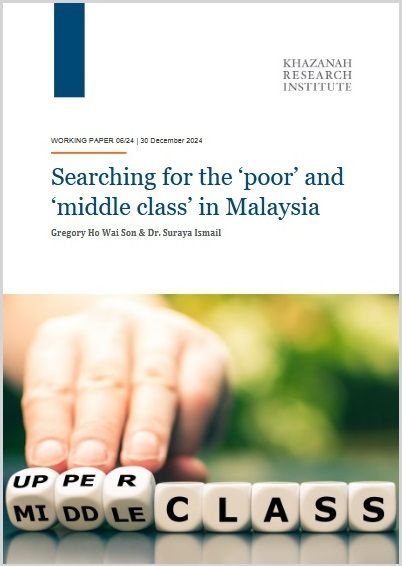
Photo by Low Yen Yeing/The Edge
KUALA LUMPUR (Dec 31): Malaysia’s middle 50% of income earners remain economically vulnerable while only the richest 30% show middle-class spending patterns, an updated study shows.
The bottom 20%, meanwhile, continue to focus on fulfilling basic needs, such as food, housing and clothing, according to an updated working paper authored by researchers Gregory Ho Wai Son and Dr Suraya Ismail and published by Khazanah Research Institute.
“The findings raise an important question on the validity of the current household demarcation of B40, M40 and T20 adopted by the government of Malaysia,” Ho and Suraya wrote. “This… highlights the need for more accurate classifications aligned with real consumption patterns.”
For more than a decade now, Malaysia has been following the World Bank’s classification of B40, M40, and T20 from the Ninth Malaysia Plan to the 11th Malaysia Plan. Most policies equate B40 to poor households and the M40 to middle-class households.
Most recently, the government has announced rationalisations of various aids and assistance targeting the T20, cutting them off from subsidies on electricity and haj. By the middle of 2025, the government is planning to prevent T20 from enjoying RON95 petrol subsidy.
“These demarcations might not be as accurate since the groups of households within the allotted ranges do not possess similar characteristics of consumption,” the researchers wrote.
The M50 in particular “is not the middle class and is still vulnerable,” switching between essential and aspirational expenditures, they flagged. These households demonstrated minor diffferences from the B20 group, they said.
“It would be more accurate to claim that only the top 30% of the total households are in the aspirational class rather than the original misconception of 60% (that is, M40 plus T20).”
Their findings "challenge the existing B40, M40 and T20 classification that reveals discrepancies between income demarcations and actual expenditure patterns". To them, the demarcations and their definitions should be:
"These demarcations are not a proxy for distinguishing between the wealthy and the poor, the haves and have-nots. They are merely intended as a guide to show the differences that exist within a given society. In other words, the demarcations do not differentiate between the rich and the poor, but rather simply who is richer and who is poorer; and it is a relative comparison," they said.
As example, they said the most affluent in a poor country can still be considered 'poor' if placed in a rich country, but would nevertheless be considered the most well-off in their own country within the specified household demarcations.
In conclusion, “our study underscores the importance of revisiting and refining household demarcations to better capture the realities of economic stratification,” Ho and Suraya said, calling for deeper understanding of household consumption for “more effective and equitable” policy measures.
- Tariff shock awaits China after trade surplus hits US$103 bil
- Maybank customers can now make QR payments through MAE app in Cambodia
- Malaysian semiconductor stocks fall amid US probes, software firms steady
- HRD Corp's chief executive Shahul Hameed steps down, confirming The Edge report
- Nation gathers to bid farewell to Pak Lah
- Binasat loses civil works job for Amazon-linked KL substation project
- US economy set to lose billions as foreign tourists stay away
- US stock futures edge up on hopes of more tariff exemptions
- China's Xi arrives in Malaysia for three-day state visit
- World oil demand, US supply to grow more slowly on tariff tensions, IEA says

